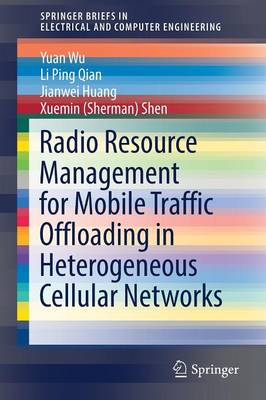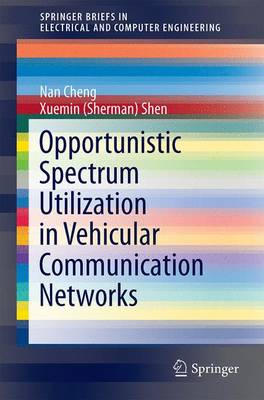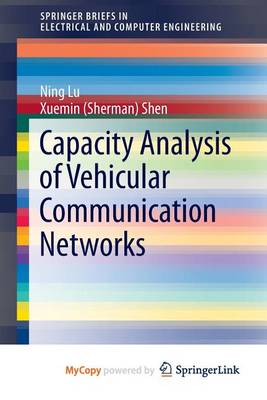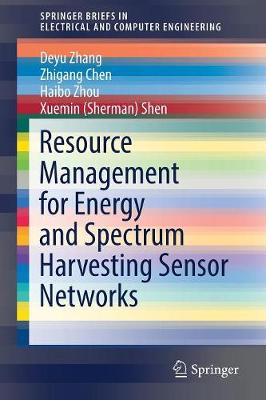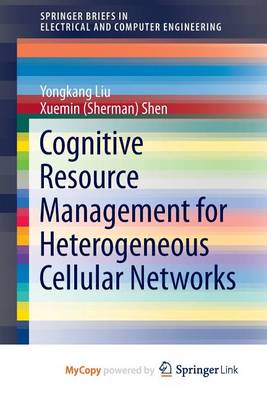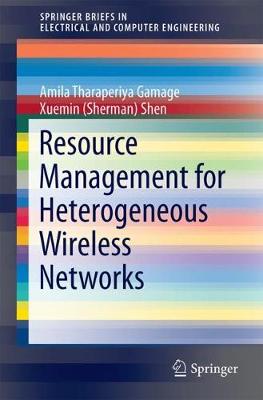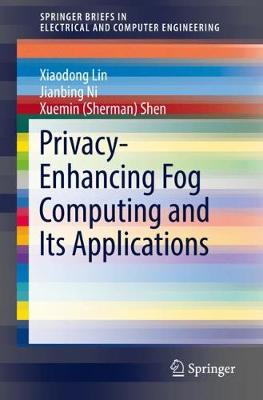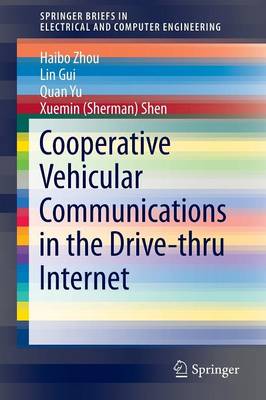SpringerBriefs in Electrical and Computer Engineering
9 total works
Radio Resource Management for Mobile Traffic Offloading in Heterogeneous Cellular Networks
by Yuan Wu, Li Ping Qian, Jianwei Huang, and Xuemin (Sherman) Shen
This brief is an excellent resource for postgraduate students studying advanced-level topics in wireless communications and networking. Researchers, engineers and professionals working in related fields will also find this brief a valuable resource tool.
Opportunistic Spectrum Utilization in Vehicular Communication Networks
by Nan Cheng and Xuemin (Sherman) Shen
Capacity Analysis of Vehicular Communication Networks
by Professor Ning Lu and Xuemin (Sherman) Shen
The downlink capacity of VANETs is also investigated in which access infrastructure is deployed to provide pervasive Internet access to vehicles. Different alternatives of wireless access infrastructure are considered. A lower bound of downlink capacity is derived for each type of access infrastructure. The last section of this book presents a case study based on a perfect city grid to examine the capacity-cost trade-offs of different deployments since the deployment costs of different access infrastructure are highly variable.
Resource Management for Energy and Spectrum Harvesting Sensor Networks
by Deyu Zhang, Zhigang Chen, Haibo Zhou, and Xuemin (Sherman) Shen
To efficiently collect data through the available licensed spectrum, this brief examines the joint management of energy and spectrum. An EH-powered spectrum sensing and management scheme for Heterogeneous Spectrum Harvesting Sensor Networks (HSHSNs) is presented in this brief. The scheme dynamically schedules the data sensing and spectrum access of sensors in ESHSNs to optimize the network utility, while considering the stochastic nature of EH process, PU activities and channel conditions.
This brief also provides useful insights for the practical resource management scheme design for ESHSNs and motivates a new line of thinking for future sensor networking. Professionals, researchers, and advanced-level students in electrical or computer engineering will find the content valuable.
Cognitive Resource Management for Heterogeneous Cellular Networks
by Yongkang Liu and Xuemin (Sherman) Shen
Resource Management for Heterogeneous Wireless Networks
by Amila Tharaperiya Gamage and Xuemin (Sherman) Shen
This book provides an in-depth discussion on how to efficiently manage resources of heterogeneous wireless networks and how to design resource allocation algorithms to suit real world conditions. Efficiently managing resources of the networks is more crucial now, than ever before, to meet users' rapidly increasing demand for higher data rates, better quality-of-service (QoS) and seamless coverage. Some of the techniques that can be incorporated within heterogeneous wireless networks to achieve this objective are interworking of the networks, user multi-homing and device-to-device (D2D) communication.
Designing resource allocation algorithms to suit real world conditions is also important, as the algorithms should be deployable and perform well in real networks. For example, two of the conditions considered in this book are resource allocation intervals of different networks are different and small cell base stations have limited computational capacity. To address the first condition, resource allocation algorithms for interworking systems are designed to allocate resources of different networks at different time-scales. To address the second condition, resource allocation algorithms are designed to be able to run at cloud computing servers. More of such conditions, algorithms designed to suit these conditions, modeling techniques for various networks and performance analysis of the algorithms are discussed in the book.
This book concludes with a discussion on the future research directions on the related fields of study. Advanced-level students focused on communication and networking will use this book as a study guide. Researchers and experts in the fields of networking, converged networks, small-cell networks, resource management, and interference management, as well as consultants working in network planning and optimization and managers, executives and network architects working in the networking industry will also find this book useful as a reference.
Privacy-Enhancing Fog Computing and Its Applications
by Xiaodong Lin, Jianbing Ni, and Xuemin (Sherman) Shen
This SpringerBrief covers the security and privacy challenges in fog computing, and proposes a new secure and privacy-preserving mechanisms to resolve these challenges for securing fog-assisted IoT applications. Chapter 1 introduces the architecture of fog-assisted IoT applications and the security and privacy challenges in fog computing. Chapter 2 reviews several promising privacy-enhancing techniques and illustrates examples on how to leverage these techniques to enhance the privacy of users in fog computing. Specifically, the authors divide the existing privacy-enhancing techniques into three categories: identity-hidden techniques, location privacy protection and data privacy enhancing techniques. The research is of great importance since security and privacy problems faced by fog computing impede the healthy development of its enabled IoT applications.
With the advanced privacy-enhancing techniques, the authors propose three secure and privacy-preserving protocols for fog computing applications, including smart parking navigation, mobile crowdsensing and smart grid. Chapter 3 introduces identity privacy leakage in smart parking navigation systems, and proposes a privacy-preserving smart parking navigation system to prevent identity privacy exposure and support efficient parking guidance retrieval through road-side units (fogs) with high retrieving probability and security guarantees. Chapter 4 presents the location privacy leakage, during task allocation in mobile crowdsensing, and propose a strong privacy-preserving task allocation scheme that enables location-based task allocation and reputation-based report selection without exposing knowledge about the location and reputation for participators in mobile crowdsensing. Chapter 5 introduces the data privacy leakage in smart grid, and proposes an efficient and privacy-preserving smart metering protocol to allow collectors (fogs) to achieve real-time measurement collection with privacy-enhanced data aggregation. Finally, conclusions and future research directions are given in Chapter 6.
This brief validates the significant feature extension and efficiency improvement of IoT devices without sacrificing the security and privacy of users against dishonest fog nodes. It also provides valuable insights on the security and privacy protection for fog-enabled IoT applications. Researchers and professionals who carry out research on security and privacy in wireless communication will want to purchase this SpringerBrief. Also, advanced level students, whose main research area is mobile network security will also be interested in this SpringerBrief.
